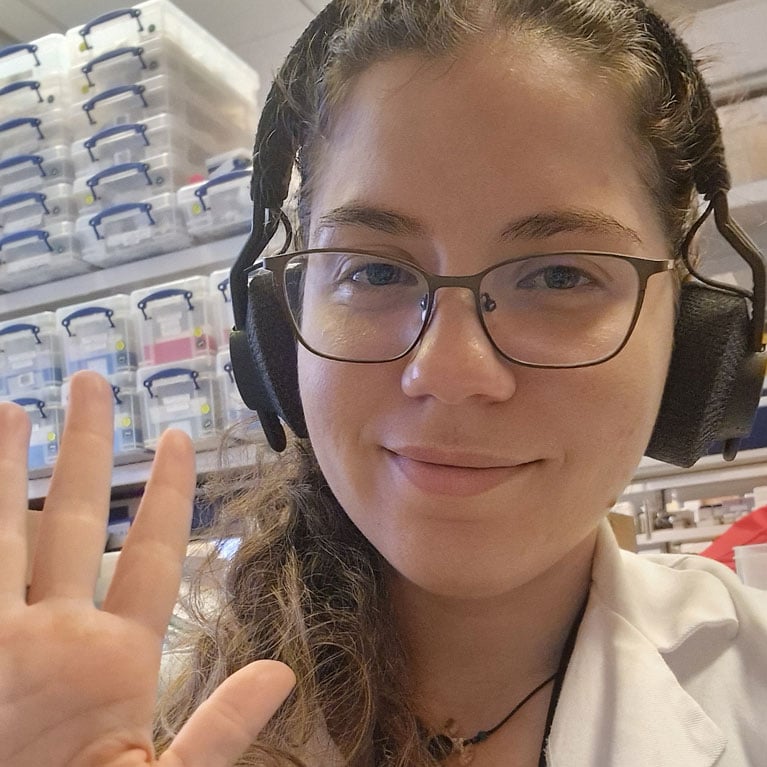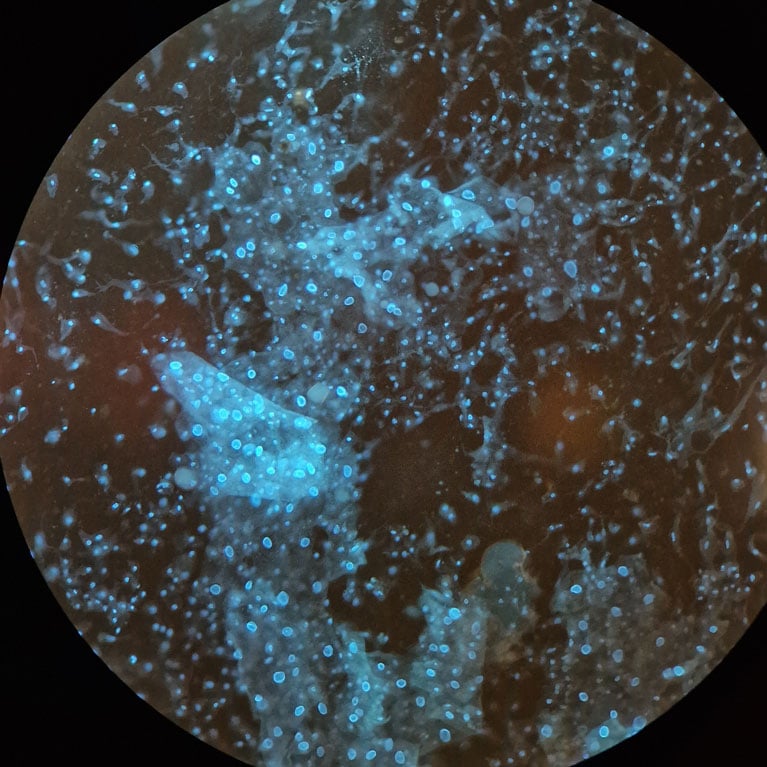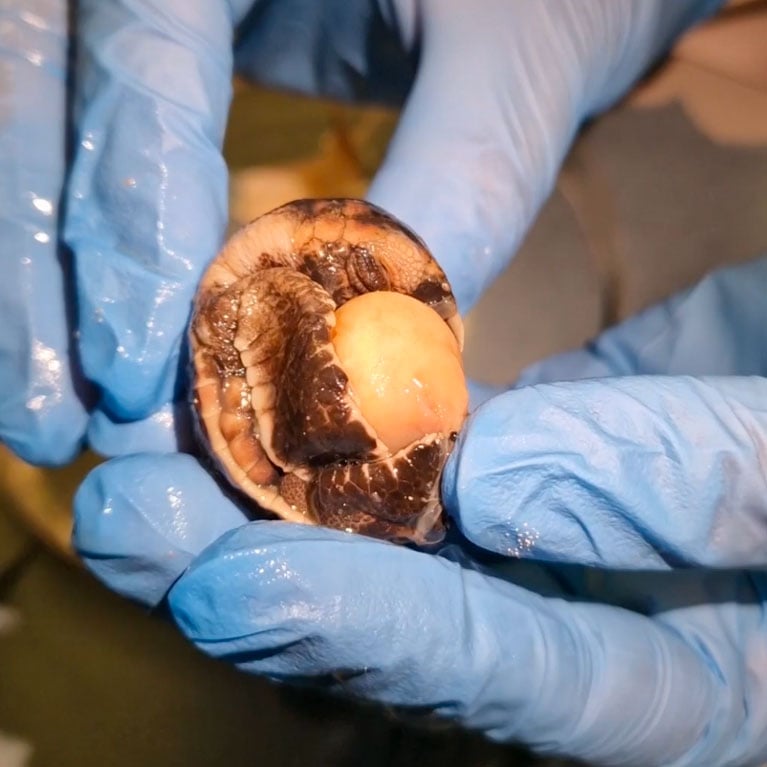Failure to launch: what’s happening with Seychelles’ turtle and tortoise eggs?
For dwindling numbers of tortoises and turtles, ensuring that your eggs hatch successfully to launch the next generation is key to population stability or recovery. But for threatened species of hawksbill and green sea turtles and the land-based Aldabra tortoise in Seychelles, eggs that don’t hatch with no clear explanation could spell disaster. Alessia is investigating the causes of hatching failures for these species with a view to identifying the key elements that require conservation and management intervention. With the right information, policies to protect these species can be more specific and successful.
Born and raised in Seychelles, I might have taken for granted its lush vegetation, stunning biodiversity and beautiful beaches. I am grateful I didn’t. From exploring Justin Gerlach’s tortoise and terrapin sanctuary during my early childhood on Silhouette to my participation in the D’Arros Experience programme and first job working with sea turtles, my constant affinity for nature, and turtles in particular, shaped my path to pursue a degree in zoology.
I strongly believe that to preserve the world’s biodiversity efficiently, we need to work together to bridge the gap between science and conservation. For me...



Assessment of fertility and embryo survival rates for threatened turtle and tortoise species in Seychelles.
The aims of this project are to improve our understanding of the causes of hatching failure in threatened Seychelles turtle and tortoise populations and to provide important information about population fertility rates that will inform management interventions by Seychelles’ conservation organisations.
The failure of eggs to hatch is a major barrier to the recovery of threatened turtle and tortoise populations. Many unhatched eggs may show no signs of development, but it is unknown whether they fail due to fertility issues (problems with sperm or egg function) or the death of the embryo. This distinction is crucial for understanding the potential environmental and human-mediated drivers of infertility and embryo death and devising effective conservation interventions to improve hatching rates.
Turtles and tortoises are facing an extinction crisis, and ecosystems around the world will be at risk of collapsing when they lose the crucial services the reptiles provide. In Seychelles, sea-grass meadows – with their huge potential to sequester carbon dioxide – depend on the grazing of green turtles to stay healthy. Without them, the meadows become overgrown, obstructing currents and promoting the growth of detrimental slime moulds and algae. Similarly, hawksbill turtles play an important role in controlling the growth of marine sponges that aggressively compete with reef-building corals, which are already struggling to recover from devastating bleaching events. On land, Aldabra tortoises shape the habitats of Seychelles islands by grazing on plants, dispersing seeds and trampling areas of vegetation, all of which bring vital benefits for the wider ecosystem. Given their importance for the flora and fauna of Seychelles, it is vital that populations of turtles and tortoises are conserved.
A key barrier to population growth in turtles and tortoises is the failure of eggs to hatch. Hatching rates are a useful indicator of the reproductive health of a population, but unhatched eggs that show no signs of development are often ignored or assumed to be unfertilised. This is a problem, because undeveloped eggs often contain embryos that died at an early stage of development. Misclassifying these eggs can lead to infertility rates being overestimated and erroneously linked to environmental factors. Accurate differentiation of fertilisation failure from embryo mortality in undeveloped eggs would allow the reproductive health of a population to be monitored precisely; a better understanding of the potential drivers of infertility versus embryo death to be gained; and fertility rates for individuals and populations to be reliably estimated. In turn, these outcomes would inform conservation management strategies aimed at improving breeding success in threatened species.
To achieve our objective of improving our understanding of the causes of hatching failure in threatened Seychelles turtles and tortoise populations, we will:
- Examine unhatched eggs and collect data on egg fertility and embryo mortality rates for three threatened turtle and tortoise species (green and hawksbill turtles and Aldabra tortoise) across Inner and Outer Island populations, using cutting-edge methods recently tested for these taxa.
- Analyse differences in fertility and embryo mortality rates to identify the main drivers of hatching failure in Seychelles turtles and tortoises and how these vary between species and islands.
- Provide data, information and advice to conservation partners, based on the knowledge and data generated from the project, to help them increase the efficiency and success of conservation interventions aimed at the turtle and tortoise egg/nest phase.
Summary of main research results/outcomes
Using innovative microscopic methods to investigate failed, undeveloped eggs, we have informed 9 Seychelles conservation organisations covering 10 islands on the fertility and embryo survival rates of Green sea turtles, Hawksbill turtles and Aldabra Giant tortoises. Across all species, the results demonstrated that failed eggs with no signs of development, should not be assumed to be unfertilised. Undeveloped sea turtle eggs across the Seychelles appear to be suffering mostly from early embryonic death, whilst the tortoises show relatively higher variation in fertility status across different islands. This work represents the first insights of its kind, and conservation partners have expressed the insightfulness of the results and the importance it will have for informing future management interventions of these threatened species. Data from this study has been combined with previous years of work to produce a publication in Animal Conservation – extending the impacts of this method to global levels.
Conservation achievements
Turtles and tortoises are facing a global extinction crisis, and hatching failure is an increasing problem. This study has led to the publication of Lavigne et al., (2024) where we synthesized the current literature on fertilization and hatching success in turtles and tortoises, tested innovative tools for monitoring fertility and embryo survival rates and described how these approaches can be adopted by conservation practitioners to provide accurate information of the causes of early reproductive failure. We also highlighted the potential for this method to be applied to other reptile groups – making it an essential paper for conservation biologists, policy-makers and students alike.
Surveys were circulated amongst conservation partners by the end of project activities in 2024. Six of the nine partners (Olive Ridley Project, Cousine Island Company Limited, North Island Company Limited; Save Our Seas Foundation: D’Arros Research Centre, and Seychelles Island Foundation) returned completed surveys to provide specifics on the benefits they experienced from the project and how they feel the results will influence their management policies and actions.
In the survey, partners expressed that the Egg Collection Protocol and Data Collection Record Sheet was very easy to understand and execute (with no improvements required), or albeit easy, minor clarifications and/or requested future improvements were made. Survey responders also felt that communications with the Project Leader was always prompt, effective and accessible with a clear understanding of how to proceed. However, if there were minor delays in communication, it did not hinder the project, and eventual replies were clear and helpful. All survey participants felt that, compared to the knowledge prior to the study, the results of this project have helped improve the organisation’s understanding of hatching failure in the target turtle/tortoise population and species. Moreover, all participants agreed that the results of this study will inform future management interventions for their target turtle/tortoise population.
Education / Public awareness achievements / Outputs / Media / Communication
Public awareness of the project has been shared on multiple occasions on the Project Leader’s social media pages on Instagram and TikTok under the handle of @turtle_eggsplorer. These pages are about communicating science to the public to educate, inspire and motivate others to care about turtles and tortoises, and biodiversity/conservation as a whole. @turtle_eggsplorer’s page primarily creates content around the Project Leader’s research projects on hatching failure in turtles and tortoises. Throughout the course of this project, associated posts have amassed several million views, primarily on TikTok.
As an Educational Consultant on turtles and tortoises for The D’Arros Experience, the Project Leader also integrated some of this study’s information as learning material. This was an opportunity for young Seychellois children to learn more about turtle and tortoise research happening in their country and gain insights into what it is like to be a Seychellois scientist and a Save Our Seas Project Leader.
The Project Leader was also invited to be on podcast episodes by Olive Ridley Project’s: Sea Turtle Stories and Save Our Seas Foundation’s: World of Sharks.
Published papers
A publication in the Scientific Journal: Animal Conservation was made on the 13th of September 2024 covering a timeline of 2021-2023. This work has also been presented at the 1st Seychelles Coastal and Marine Science Symposium in May 2024:
Lavigne, A., Bullock, R., Shah, N.J., Tagg, C., Zora, A. and Hemmings, N. (2024), Understanding early reproductive failure in turtles and tortoises. Animal Conservation https://doi.org/10.1111/acv.12986
Further publication opportunities for data related to this study arose in the form of an invitation to co-author a chapter for the upcoming, updated IUCN-SSC Marine Turtle Specialist Group (MTSG) manual on Research and Management Techniques for the Conservation of Sea Turtles (https://www.iucn-mtsg.org/publications). The chapter has already been peer-reviewed and editor-approved.

